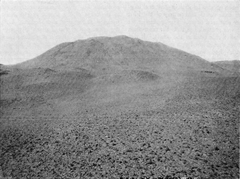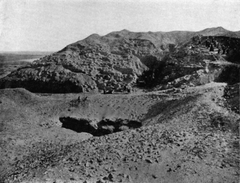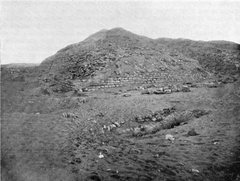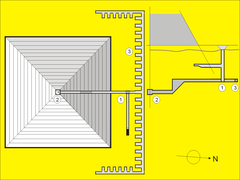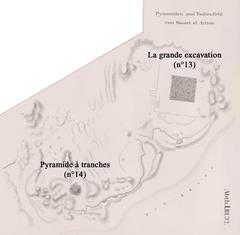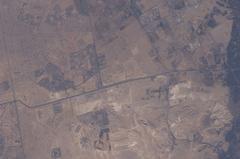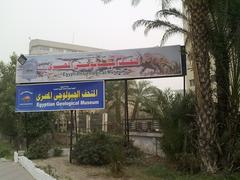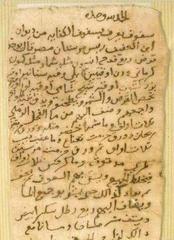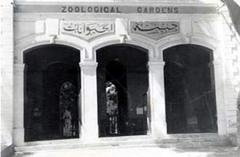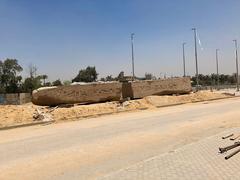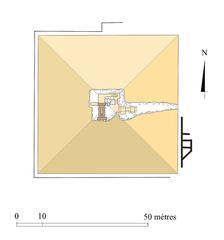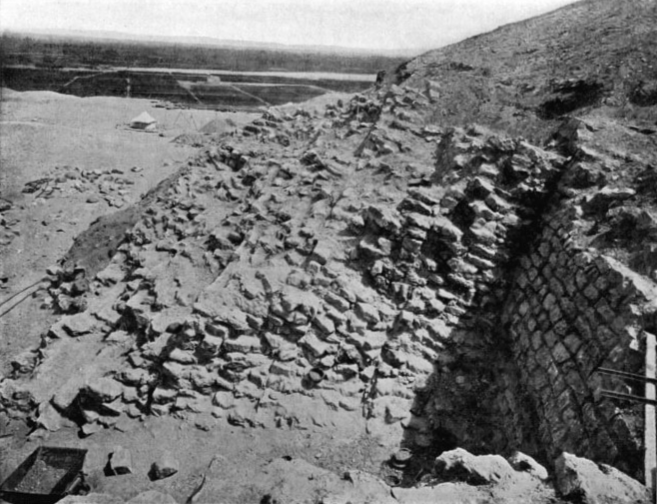
Layer Pyramid Visiting Hours, Tickets, and Guide to Giza Historical Sites
Date: 14/06/2025
Introduction
The Layer Pyramid at Zawyet el Aryan stands as one of ancient Egypt’s most intriguing yet lesser-known monuments. Built during the 3rd Dynasty of the Old Kingdom (circa 2686–2613 BCE), the pyramid is widely attributed to Pharaoh Khaba and marks a pivotal stage in the evolution of Egyptian royal tombs. Its distinctive five-step design, constructed from horizontal layers of limestone, reflects early experimentation with pyramid architecture before the iconic smooth-sided pyramids of Giza.
Situated strategically between the Giza Plateau and Abusir necropolis, the Layer Pyramid occupies a military-restricted zone, making public access highly limited. While this restriction preserves its mystique, it also challenges in-person exploration. Nevertheless, the Layer Pyramid remains a focal point for researchers and history enthusiasts eager to understand the origins of pyramid construction and Old Kingdom funerary traditions.
This comprehensive guide explores the Layer Pyramid’s historical context, architectural features, and cultural significance. It also provides practical visitor information, guidance for experiencing the site remotely, travel tips for the Giza region, and recommendations for nearby attractions. Whether you are planning a journey to Egypt or exploring ancient wonders from afar, this resource will enrich your understanding of Egypt’s monumental legacy.
For authoritative background and updates, see Wikipedia’s Layer Pyramid entry, the overview from travel2egypt.org, and the Egyptian Ministry of Tourism and Antiquities.
Table of Contents
- Introduction
- Historical Background and Significance
- Architectural Features
- Visiting the Layer Pyramid
- How to Get to Zawyet El Aryan
- Nearby Attractions
- Environmental and Preservation Considerations
- Cultural Insights and Local Interactions
- Frequently Asked Questions (FAQ)
- Conclusion and Visitor Recommendations
- References
Historical Background and Significance
The Layer Pyramid, located in Zawyet el Aryan between Giza and Abusir, was constructed during the reign of Pharaoh Khaba in Egypt’s 3rd Dynasty. This period was a time of significant architectural innovation as Egyptian builders transitioned from mastaba tombs to step pyramids and ultimately to smooth-sided pyramids. Though unfinished, the Layer Pyramid’s five-step design and construction methods offer a window into this experimental phase.
Artifacts such as alabaster vases with Khaba’s Horus name, discovered in nearby Mastaba Z-500, strengthen the attribution to Khaba (travel2egypt.org). Its unfinished state, lack of burial chamber artifacts, and proximity to other early pyramids suggest it may have been abandoned after the king’s brief reign.
The Layer Pyramid is emblematic of Egypt’s early attempts at monumental stone construction and is surrounded by mastabas belonging to 3rd Dynasty officials, underscoring the complexity and hierarchy of royal funerary practices (Wikipedia).
Architectural Features
Superstructure: Step Pyramid Design
- Design: Built from horizontal courses of local limestone, the pyramid is characterized by a “layered” appearance, giving it its modern name. It was originally planned as a five- to seven-step structure, measuring approximately 78–84 meters per side, with an intended height of 42–45 meters. Erosion and the absence of casing stones have reduced its visible height to about 17 meters (Wikipedia).
- Comparison: The design closely resembles the Buried Pyramid of Sekhemkhet, highlighting shared architectural experimentation in the 3rd Dynasty.
Substructure: Burial Chambers and Corridors
- Layout: An entrance on the north side leads to a descending passage opening into a network of corridors and chambers beneath the pyramid. The main burial chamber remains unfinished and artifact-free, supporting the theory of abandonment (Wikipedia).
- Associated Mastabas: Mastaba Z-500 nearby yielded artifacts linked to Khaba, reinforcing the pyramid’s attribution (travel2egypt.org).
Mortuary and Valley Temples
- Mortuary Temple: Traces of a mortuary temple have been found on the pyramid’s eastern side, consistent with Old Kingdom religious customs.
- Valley Temple: While not conclusively identified, a valley temple likely existed, possibly connected to the pyramid by a causeway (Wikipedia).
Construction Techniques
- Materials: The core is made from roughly quarried limestone blocks laid in horizontal layers. The foundation sits on a rock ridge above the floodplain, giving the monument prominence in the landscape.
- Unfinished State: The lack of outer casing and incomplete substructure make the Layer Pyramid a valuable case study in ancient construction challenges (Wikipedia).
Visiting the Layer Pyramid: Access and Practical Information
Access and Restrictions
- Military Zone: The Layer Pyramid is located within a military-restricted area, and public access is not permitted. There are no official visiting hours or ticket sales.
- Permits: Only researchers with special permits from Egyptian authorities may gain access, and these are rarely granted for tourism (Wikipedia).
- Facilities: There are no visitor amenities or accessibility accommodations at the site.
Alternative Ways to Explore
- Virtual Tours: While on-site visits are not possible, detailed documentaries, virtual tours, and interactive maps are available online through reputable travel and archaeological platforms.
- Nearby Open Sites: Visitors can explore accessible sites like the Giza Pyramids, Saqqara’s Step Pyramid, and Abusir necropolis for a comprehensive view of pyramid evolution.
How to Get to Zawyet El Aryan
- Location: Zawyet el Aryan is between Giza and Abusir, approximately 20–30 kilometers southwest of central Cairo (Wikipedia).
- Transport: While the Layer Pyramid is not open, the general area is reachable by taxi or private car from Cairo. Local tour operators may offer itineraries that include views of the site’s location.
Travel Tips and Accessibility
- Best Time to Visit: Plan Giza region visits for October to April for cooler and more comfortable weather.
- Guided Tours: For accessible sites, booking a guide is highly recommended to gain historical insight and navigate complex archaeological areas.
- What to Bring: For nearby open sites, pack water, sun protection, and sturdy footwear. Note that the Layer Pyramid lacks visitor amenities.
Environmental and Preservation Considerations
- Site Fragility: The Layer Pyramid is vulnerable to erosion and human impact. Preservation efforts by the Egyptian Ministry of Antiquities and international teams are ongoing (Springer).
- Visitor Conduct: If viewing from a distance, respect boundaries, avoid trespassing, and do not remove stones or artifacts.
Cultural Insights and Local Interactions
- Local Communities: The Zawyet el Aryan area and nearby villages present opportunities for cultural engagement. Support local artisans and follow etiquette by dressing modestly and interacting respectfully.
- Authentic Experience: The pyramid’s obscurity and tranquility offer a more genuine connection to Egypt’s ancient landscape compared to heavily touristed sites (MyTripWise).
Nearby Attractions
Enhance your Giza region visit with these accessible sites:
- Giza Pyramids Complex: The Great Pyramid, Sphinx, and Solar Boat Museum (Wikipedia).
- Saqqara: The Step Pyramid of Djoser, Egypt’s earliest stone pyramid, and numerous tombs (Wikipedia).
- Abusir: Site of several Old Kingdom pyramids and mastabas.
- El-Lisht: Middle Kingdom pyramids, mastaba tombs, and settlement ruins (Springer).
- Fayoum Oasis: For natural beauty and ancient ruins.
Frequently Asked Questions (FAQ)
Q: Can I visit the Layer Pyramid at Zawyet el Aryan?
A: No, the site is in a military zone and closed to the public.
Q: Are there tickets or visiting hours available?
A: No official tickets or visiting hours exist for the Layer Pyramid.
Q: Are guided tours available?
A: No direct tours to the Layer Pyramid, but numerous guided tours cover accessible sites like Giza and Saqqara.
Q: Is the site wheelchair accessible?
A: The Layer Pyramid is inaccessible, but some nearby pyramids have limited accommodations.
Q: How can I learn more?
A: Explore online documentaries, virtual tours, and articles for a remote experience.
Summary and Visitor Recommendations
The Layer Pyramid remains a significant, if inaccessible, testament to Egypt’s early Old Kingdom innovation and royal funerary practices. Its unfinished, stepped design and associated necropolis highlight the transitional period of pyramid construction and social complexity during the 3rd Dynasty. While military restrictions prevent public visits, travelers can still appreciate Egypt’s architectural journey by exploring Giza, Saqqara, and Abusir.
For a deeper understanding, leverage virtual resources, documentaries, and scholarly articles, and always check the Egyptian Ministry of Tourism and Antiquities for updates. Plan your exploration during cooler months, use expert guides, and respect conservation efforts to ensure Egypt’s archaeological heritage endures for future generations.
For the latest updates, curated content, and travel inspiration, download the Audiala app and follow us on social media.
Visual Recommendations
- High-quality images with descriptive alt text, such as “Layer Pyramid at Zawyet el Aryan showing step pyramid construction.”
- Maps displaying the pyramid’s location relative to Cairo, Giza, Saqqara, and Abusir.
- Virtual tour links or embedded site videos.
References and Further Reading
- Layer Pyramid, Wikipedia, 2024
- The Pyramid of Khaba, travel2egypt.org, 2024
- Egyptian Ministry of Tourism and Antiquities Ticket Information, 2024
- Pyramids of Giza, PlanetWare, 2024
- Egyptian Pyramids Architecture Overview, Visual-Arts-Cork.com, 2024
- Archaeological Conservation Efforts, Springer, 2024
- How Mass Tourism Affects Pyramids of Giza, MyTripWise, 2024
- Egyptian Pyramids: A Tourist’s Guide, Egypt Mythology, 2024
- Egyptian Pyramids, Odynovo Tours, 2024

